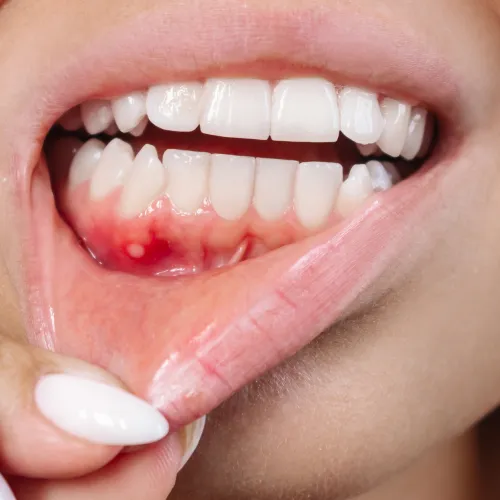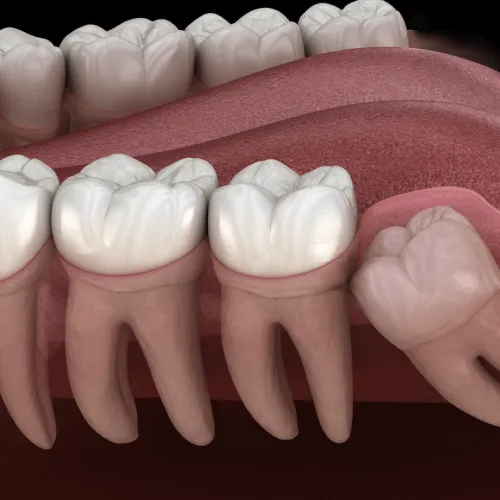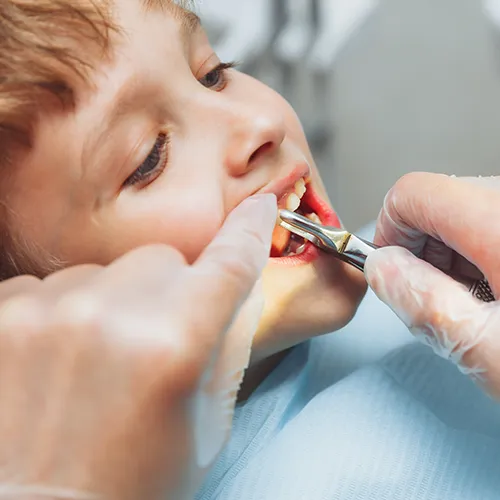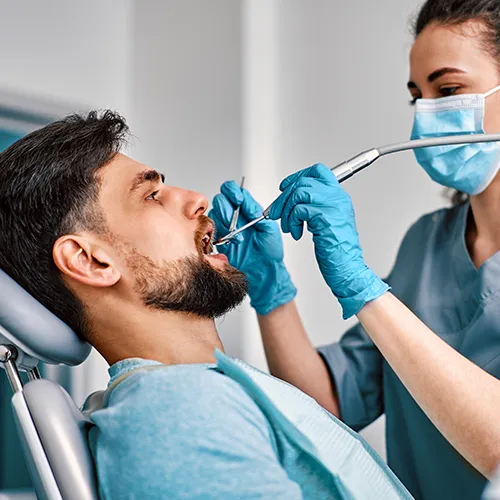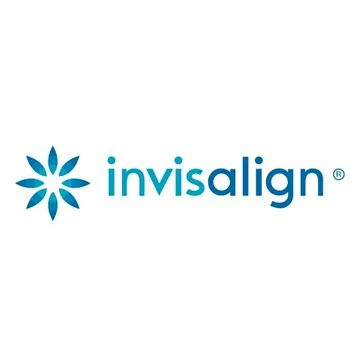Restorative Dentistry
Why Cavities Are Everyone’s Problem
Let’s be honest, no one really expects to get a cavity as an adult. Most of us think cavities are something we left behind in childhood, right along with lost baby teeth and Saturday morning cartoons. But here’s the truth: cavities can (and do) sneak up on people of all ages.
At Prestige Dental, we see it all the time. Even patients with great brushing habits can be surprised to find a little decay developing. And while it might seem like a small issue at first, untreated cavities can snowball into bigger problems; think toothaches, infections, or even tooth loss.
But don’t worry. If you’re reading this, you’re already taking a big step in the right direction: learning what cavities really are, how fillings help, and how to keep your teeth healthy for years to come.
Can you make a cavity go away?
This is probably the number one question we hear, and the answer depends on timing.
In the earliest stage of tooth decay, when the enamel (the outer layer of your tooth) starts to lose minerals, it can sometimes be reversed. This is called demineralization. At this point, good oral hygiene, fluoride treatments, and certain remineralizing products can help your enamel heal.
But once the decay breaks through the enamel and forms an actual cavity (hole), it’s not going to heal on its own. The tooth can’t regenerate lost structure like your skin does after a cut. That’s where fillings come in.
What does a filling actually do?
- Stops decay from spreading. A filling cleans out the damaged area and seals it off.
- Restores function. You can chew without pain or worrying about food getting stuck.
- Protects the tooth. Left untreated, a cavity will just keep growing until it threatens the entire tooth—and possibly the ones next to it.
So, no, you can’t make a fully formed cavity magically disappear. But catching it early and getting a filling can save you a lot of trouble (and money) down the road.
What will happen if a cavity is left untreated?
Think of a cavity like a leak in a boat. Ignore it long enough, and things will eventually sink. Here’s what can happen if a cavity is left alone:
1. Increased Sensitivity and Pain
At first, you might just feel a bit of sensitivity to hot, cold, or sweet foods. But as the decay gets deeper, it can reach the softer dentin and even the nerve inside the tooth, causing sharp pain or dull aches.
2. Infection and Abscess
Once bacteria reach the inner pulp of the tooth, an infection can develop. This can lead to swelling, severe pain, and sometimes an abscess (a pocket of pus) that requires more intensive treatment like a root canal or even tooth removal.
3. Structural Damage
Decay weakens the tooth’s structure. Over time, the tooth can crack or break, making repair more complicated and expensive.
4. Spread to Other Teeth and Gums
Bacteria don’t stay put. Leaving decay untreated can increase the risk of gum disease and cavities in neighboring teeth.
5. Impact on Overall Health
Oral infections can sometimes spread to other parts of the body or worsen conditions like heart disease or diabetes.
Bottom line: Treating a small cavity early is much simpler than waiting for it to turn into a dental emergency.
How do you get rid of a cavity without going to the dentist?
Let’s be real—there are a lot of “DIY cavity cures” floating around online. People try everything from coconut oil pulling to charcoal toothpaste. But here’s the honest answer: if a cavity has formed, no home remedy will make it go away. Here’s why:
- Physical damage to a tooth won’t reverse itself. Once the decay has eaten into the enamel and dentin, no toothpaste or rinse can regrow that structure.
- Some “natural remedies” can actually make things worse. Abrasive substances can wear down enamel even further, and skipping professional care gives decay more time to spread.
- Pain relief isn’t the same as treatment. Even if a home remedy eases discomfort temporarily, it won’t stop the cavity from growing.
That said, there are things you can do to help prevent future cavities and slow the progression of very early decay:
- Brush twice daily with fluoride toothpaste.
- Floss daily to remove food and bacteria between teeth.
- Use a fluoride mouth rinse for extra protection.
- Watch your diet. Limit sugary and acidic foods and drinks, which feed harmful bacteria.
- Visit Prestige Dental regularly. Professional cleanings and checkups are the best way to catch problems early.
But for existing cavities? A filling is the only effective solution.
Fillings Today Are Better Than Ever
If the word filling makes you picture chunky metal patches from decades ago, it’s time for an update. Modern fillings are:
- Tooth-colored and natural-looking
- Durable and long-lasting
- Quick to place—often in a single visit
- Comfortable with minimal sensitivity after placement
At Prestige Dental, we offer several types of fillings and will help you choose the best one for your needs, whether it’s composite resin for a seamless look or something more robust for back teeth that handle heavy chewing.
Preventing Cavities Is a Team Effort
Your dentist isn’t just here to fix problems—we’re here to help you avoid them altogether. That’s why we recommend:
- Twice-yearly dental exams and cleanings
- Dental sealants for added protection (especially for kids and teens)
- Fluoride treatments as needed
- Personalized advice based on your habits, diet, and oral health history
A little prevention goes a long way toward keeping your smile healthy and cavity-free.
Schedule Your Checkup Today
Whether you think you might have a cavity or just want to stay ahead of future issues, Prestige Dental is here for you. We combine expert care with a relaxed, welcoming atmosphere so you can feel confident about your oral health.



